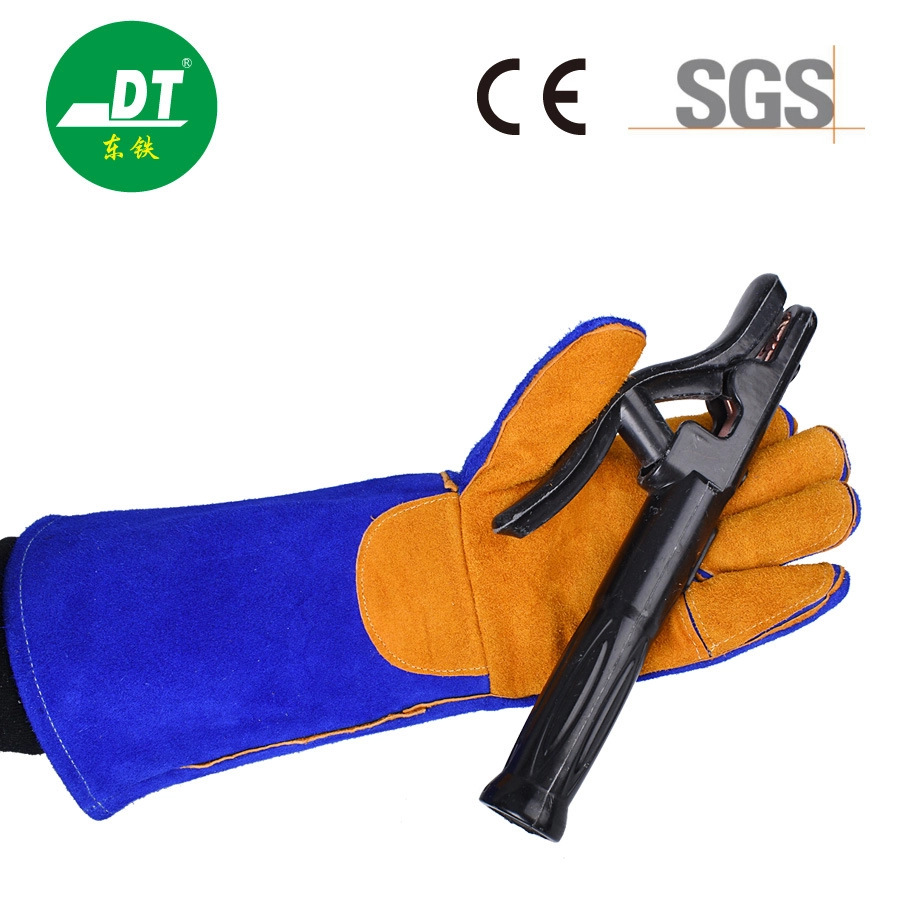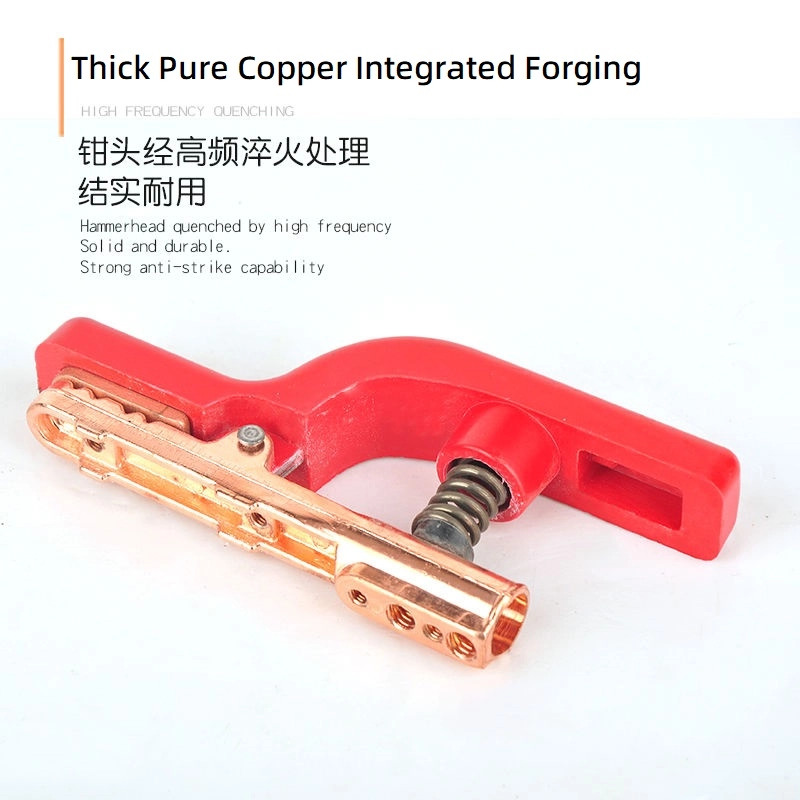Ensuring Consistent Weld Quality: A Deep Dive into Electrode Manufacturing and Quality Control
As a factory owner specializing in protective equipment, I’ve seen firsthand how a single point of failure can impact an entire operation. For welders, that single point is often the humble welding electrode. The quality of your weld, the safety of your welder, and the integrity of your final product all trace back to the quality of that consumable. This article is for procurement managers and business owners like Mark Thompson, who understand that true value lies in reliability and consistency. We will explore the critical role of quality control and quality assurance in the electrode manufacturing process, giving you the insights to verify you're sourcing the best possible welding rod for your needs.
Why Does the Quality of a Single Welding Electrode Matter So Much?
The welding electrode is the heart of any arc weld operation. It's more than just a metal rod; it's a carefully engineered consumable designed to conduct current, create a stable arc, and often provide shielding and filler metal to the weld joint. When you consider the critical applications where welding is used—from constructing skyscrapers and bridges to assembling vehicles and pipelines—the importance of a flawless weld becomes crystal clear. A poor-quality electrode can introduce defects like porosity, cracking, or slag inclusions, compromising the structural integrity of the entire project.
For a business, the consequences of using a subpar electrode are severe. A single failed weld can lead to catastrophic product failures, costly recalls, reputational damage, and significant safety hazards. From a production standpoint, an inconsistent electrode results in more time spent on rework, increased material waste, and decreased productivity. Therefore, the quality of welding electrodes isn't a minor detail; it's a cornerstone of reliable welding and manufacturing. Ensuring every single electrode meets stringent standards is essential for consistent performance.
What is the Typical Manufacturing Process for a Welding Electrode?
Understanding the manufacturing process is key to appreciating where quality control comes into play. Creating a high-quality welding electrode is a multi-step, high-precision operation. It begins with the core material, which is a specific metal wire chosen for its chemical composition and properties. This wire must be perfectly straight and clean to ensure a uniform final product.
The wire is then cut to the precise length for the specific electrode type. The next, and perhaps most critical, stage is the application of the flux coating. The flux is a complex mixture of minerals and chemicals, each playing a specific role—such as stabilizing the arc, shielding the molten weld puddle from atmospheric contamination, and forming a protective slag. This flux mixture is created in a wet paste and then extruded onto the core wire under immense pressure. The coated electrode is then carefully dried and baked in specialized ovens to remove moisture and cure the coating. Finally, the welding electrode is printed with its classification number and packaged. Each step in this production process offers an opportunity for a defect to occur, which is why rigorous oversight is paramount.
How is Quality Control Integrated into Every Stage of Production?
Effective quality control isn't something that happens only at the end of the line; it must be an integral part of every single stage of production. At reputable electrode manufacturing facilities, quality checks are continuous. It starts with the raw materials. The choice of materials is vital. A supplier for the core wire and flux components must be vetted to ensure their materials meet exact specifications for chemical composition and purity. We can't build a quality electrode on a faulty foundation.
During the production process, multiple quality control points are established. The wire is inspected for straightness and diameter. The flux mixture is constantly monitored for consistency. After the flux is extruded onto the electrode, the concentricity of the coating is checked. An off-center coating can cause the arc to wander, leading to an unstable weld. The baking process is also carefully controlled, as temperature and humidity levels are critical to the final performance of the electrode. Every individual electrode that comes off the line is visually inspected for any surface defect like cracks or chips in the flux. This obsessive attention to detail at each step is what separates a high-quality electrode from an unreliable one.
What is the Difference Between Quality Control (QC) and Quality Assurance (QA)?
The terms Quality Control (QC) and Quality Assurance (QA) are often used interchangeably, but they represent two distinct aspects of quality management. Understanding the difference is important when evaluating a manufacturer’s commitment to producing a reliable electrode.
Quality Control (QC) is product-oriented. It refers to the hands-on activities, like inspection and testing, that are performed to ensure the welding electrode meets the required standards. When an operator uses a tool to measure the diameter of an electrode or a lab technician analyzes the flux composition, they are performing QC. It's about finding and correcting any defect in the product itself.
Quality Assurance (QA), on the other hand, is process-oriented. QA is the overarching system and set of procedures that a manufacturer puts in place to help ensure that quality is built into the manufacturing process from the start. It involves creating standardized work instructions, training operators, calibrating the machine and tool sets, and auditing the entire process to prevent defects from occurring in the first place. A strong QA system, or control system, is what makes consistent QC possible. It’s the framework that ensures every electrode is made the same way, every time.
What Inspection Methods Verify the Quality of Welding Electrodes?
To verify the quality of welding electrodes, manufacturers employ a range of inspection and testing methods. These tests go far beyond a simple visual check and delve into the chemical and mechanical properties of the electrode. The goal is to ensure the electrode will perform as expected in its intended welding application.
First is the visual inspection, where each electrode is checked for physical integrity. This includes looking for cracks in the flux, ensuring the coating is concentric, and checking for any other visible defect. Next is chemical analysis. Samples of the core wire and flux are taken to a lab to confirm their chemical composition matches the required specification. This is critical as even minor variations can affect the properties of the final weld. Finally, performance testing is conducted. This involves a skilled welder using the electrode to create a test weld. The resulting weld is then subjected to mechanical tests (like bend or tensile tests) and radiographic inspection (X-rays) to check for internal defects and ensure the weld meets industry welding standards. These rigorous tests are the final confirmation that the electrode is fit for purpose.

How Does the Machine and Automation Enhance Electrode Quality?
In modern electrode manufacturing, the role of the machine and automation is indispensable for achieving high precision and consistency. While skilled operators are crucial, advanced machinery helps to eliminate the potential for human error, especially in high-volume production. A sophisticated extrusion machine, for example, can apply the flux coating with a level of uniformity that is nearly impossible to achieve manually, which is critical for a stable weld.
Automation plays a key role throughout the production process. Automated systems can control the wire feeding and cutting, ensuring every electrode core is identical. In the drying and baking ovens, sensors and computer controls maintain precise temperature and humidity levels, which is vital for the performance of the electrode. Some facilities even use automated optical inspection systems, where a camera and computer software can inspect a huge number of electrodes per minute for any surface defect, far faster and more consistently than the human eye. This integration of welding technology and automation allows manufacturers to enhance the overall quality and reliability of every electrode. The precision of the machine is key to a quality electrode. A good machine makes a good electrode.
What Should You Look for When Choosing a Supplier for Welding Solutions?
For a procurement professional, choosing the right supplier for a critical component like a welding electrode is a major decision. It’s not just about price; it’s about finding a partner who is committed to quality and reliability. When evaluating a potential supplier, ask about their quality management practices. A reputable supplier will be transparent about their QA and quality control systems.
Don't hesitate to ask for documentation, such as ISO 9001 certification, which indicates they have a robust quality management system in place. Inquire about their material sourcing—do they have a process to verify the quality of incoming materials from their own supplier network? Ask about their testing procedures. Do they conduct performance tests on each batch of electrode products? A good supplier will not only welcome these questions but will also have the data and documentation to back up their claims of producing a high-quality electrode. Building a relationship with a trustworthy supplier is the best way to ensure you receive a consistent, high-performing electrode shipment after shipment. This is the foundation of ensuring consistent quality for every weld.

Case Study: How Best Practices Lead to a Successful Electrode
Let's consider a practical example. A large construction company was experiencing a high rate of weld failures on a critical pipeline project. The financial and safety implications were enormous. An investigation traced the issue back to an inconsistent batch of welding electrode products from their supplier. The electrodes had variations in flux coating, causing an unstable arc and leading to porosity in the weld. This is a classic case of electrode failure.
The company switched to a new supplier known for its stringent quality control. This new manufacturer demonstrated their best practices: they had a multi-stage inspection process for every electrode, used a high-precision extrusion machine for coating, and conducted weldability tests on every single batch. They provided a certificate of conformity with each shipment, detailing the chemical and mechanical properties of the electrode. The result? The construction company's weld rejection rate dropped to nearly zero. This case study illustrates that investing in a high-quality welding electrode from a reputable source isn't an expense; it's an investment that pays for itself through increased productivity, enhanced safety, and the quality and integrity of the final weld. A successful electrode makes a successful weld.
How Does Electrode Quality Impact the Welder and Their Equipment?
The quality of an electrode has a direct impact on the person performing the weld. A poor-quality electrode makes the welding operation more difficult and frustrating. An unstable arc, excessive spatter, and difficulty in removing slag all lead to welder fatigue and can decrease morale. A consistent, smooth-running electrode allows the welder to focus on their technique and produce a better weld with less effort.
Furthermore, a bad electrode can affect the welding equipment itself. For instance, an electrode with an inconsistent coating can lead to fluctuations in amperage, potentially straining the power source. The electrode holder can also be affected by excessive heat or spatter caused by a faulty electrode. It’s important to remember that welding is a system. The welding equipment, the consumable electrode, and the welder's protective gear all work together. A high-quality electrode is a key part of that system, but it must be paired with reliable equipment and proper protection for the welder, such as durable welding gloves and appropriate protective clothing. You need a good electrode holder for a good electrode. The quality of welding depends on every component. A proper electrode makes the entire job easier.

What are the Key Takeaways for Ensuring High-Quality Welding Electrodes?
Ultimately, the goal for any procurement professional or business owner is to source an electrode that delivers consistent, reliable performance for every weld. This requires a proactive approach to supplier selection and an understanding of what truly defines electrode quality. The quality of welding rods plays a critical role in the welding industry.
Don't be swayed by price alone. The hidden costs of a cheap, low-quality electrode—in the form of rework, failed inspections, and potential product failures—far outweigh any initial savings. Instead, focus on value and reliability. Partner with manufacturers who can demonstrate a robust quality assurance program and who are transparent about their manufacturing techniques and testing protocols. Ensure that the electrodes you purchase will perform as expected. A great welding electrode is the foundation of a great weld. By prioritizing quality in your sourcing, you enhance the safety, productivity, and reputation of your entire operation. A good electrode helps a welder make a good weld. The electrode is the key.
Key Takeaways for Sourcing a Quality Electrode:
- Quality is Non-Negotiable: The performance of every weld begins with the quality of the welding electrode. Using a subpar electrode can lead to defects and catastrophic failures.
- Understand the Process: Familiarize yourself with the electrode manufacturing process to appreciate the many points where quality control is critical, from raw materials to final packaging.
- Distinguish QC from QA: Quality Control (QC) finds defects in the electrode, while Quality Assurance (QA) is the system that prevents defects from happening in the first place. A good supplier excels at both.
- Ask the Right Questions: When choosing a supplier, inquire about their quality management systems, material sourcing, inspection methods, and certifications like ISO 9001.
- Automation Enhances Consistency: Modern manufacturing relies on a high-precision machine and automation to produce a consistent and reliable electrode.
- Look Beyond the Electrode: Remember that a quality electrode is part of a system that includes the welder and their protective equipment, like welding masks and apparel.






